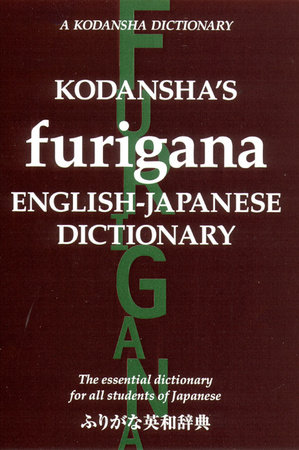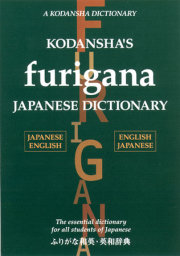A comprehensive, communicative, and practical guide to using Japanese, Kodansha's
Furigana English-Japanese Dictionary is an invaluable reference tool for anyone with an interest in the Japanese language. It has been edited with the needs of English-speaking users in mind students, teachers, business people, and casual linguists.
What is furigana and why is it so important?
Furigana refers to the small kana that are printed above or alongside kanji to show the pronunciation of the Chinese character. With furigana superscripts, the beginner who is familiar with hiragana and katakana is able to read even the most difficult and obscure kanji at a glance. Other dictionaries either provide little or no guide to kanji readings or romanize some or all of the Japanese words and sentences. In the past, romanized dictionaries were of some value to students using textbooks that contained no Japanese script. Now, however, an increasing number of influential curriculums around the world are based on a rationale and methodology that demands the introduction of hiragana and katakana from the earliest stages. Learners and their teachers studying under such curriculums will inevitably feel more comfortable with a dictionary such as Kodansha's Furigana English-Japanese Dictionary, one that shows the pronunciation of kanji with familiar and authentic kana script.
FEATURES
- More than 14,000 entries comprising the most commonly used words in English
- Furigana pronunciation guides added to all kanji
- Semantic and usage differences between Japanese words and expressions explained clearly in English
- Thousands of full-length example sentences illustrate typical usage in natural Japanese
- Idioms, phrases, and common expressions help expand vocabulary and sentence building skills
- Many encyclopedic entries offer useful background information on Japanese history and culture
- Includes many current terms such as artificial intelligence and internet
- Hundreds of scientific and medical terms with full Japanese equivalents
With its sister publication,
Kodansha's Furigana Japanese-English Dictionary, this dictionary makes the perfect reference for all students of Japanese. The two books are combined in
Kodansha's Furigana Japanese Dictionary.





